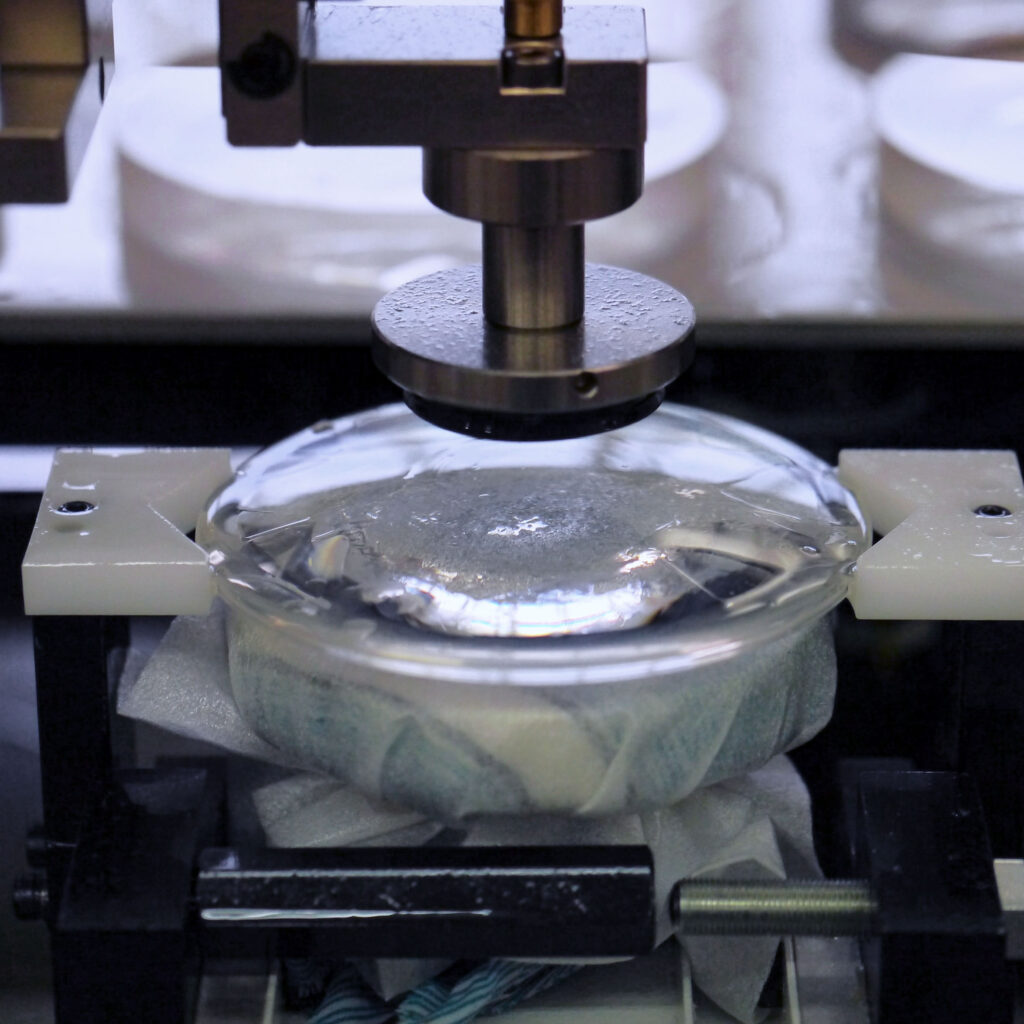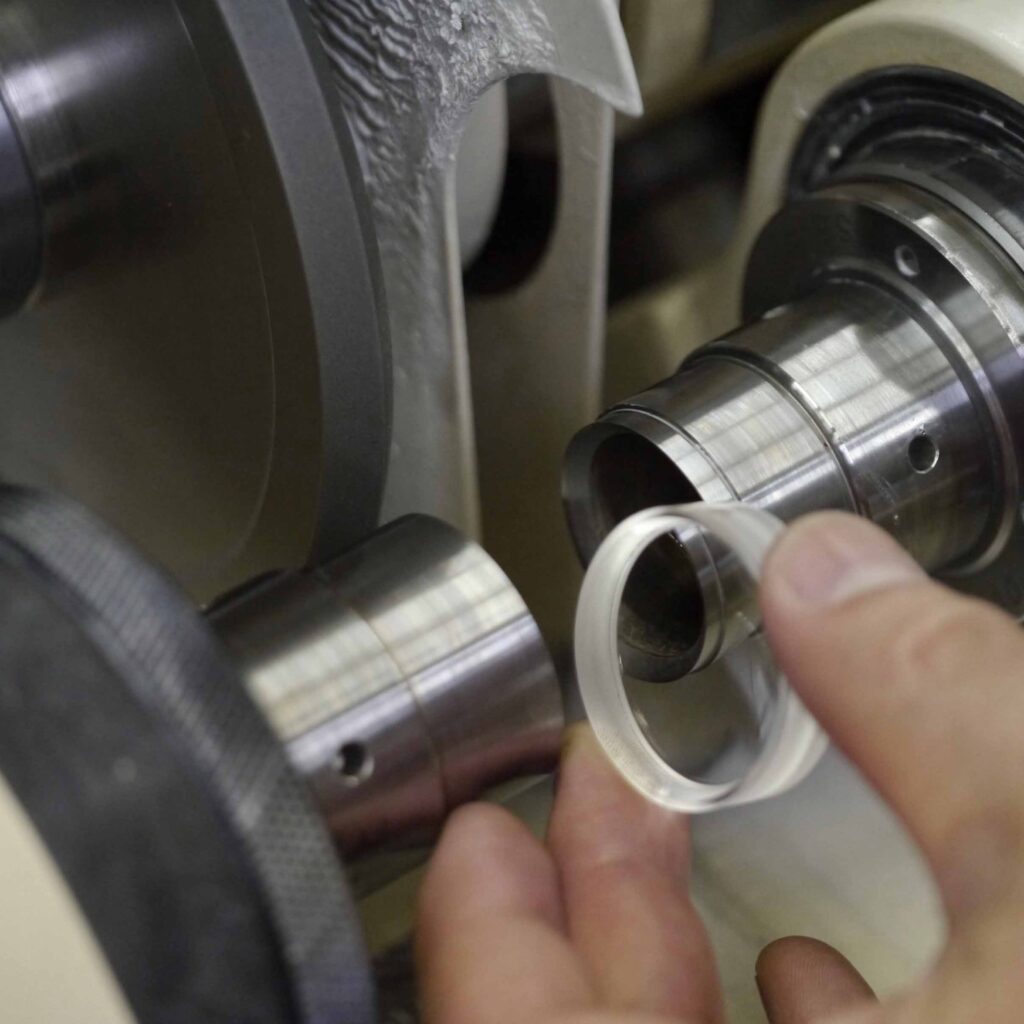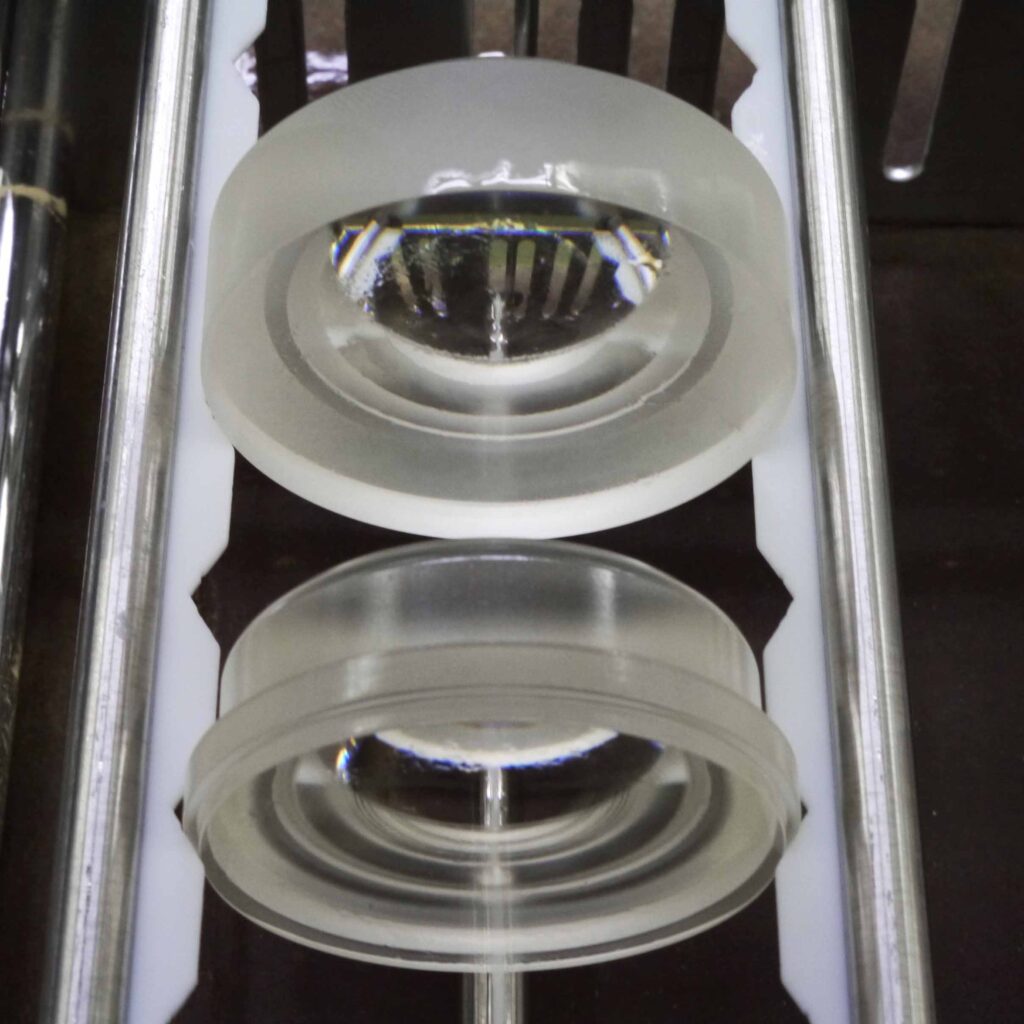How optical elements are perfectly centered

A lens becomes a product when it‘s optical element whose profiles have been polished to a designed curvature and radius are assembled into a frame. However, a polished optical element does not just simply fit into its frame because it is fabricated to a larger outer diameter than the frame. The above photograph captures a polished optical element being “centered and edged.” The most crucial point in trimming the edges of an optical element to the dimensions of the frame is to accurately center it.
There is a reference line drawn on lens diagrams that represents the optical axis, which is unperceivable to the eye, but if the curvature centerline between the two faces of an optical element deviates from this optical axis (off-center), optical performance is lost. Since an optical system consists of several optical elements, the central axis of each element has to be perfectly aligned with the optical axis.

There are various ways to center an optical element, including a mechanical procedure that uses a bell clamp. With it, the optical element is sandwiched firmly from both sides by two holders (one fsstationary and one for clamping) that rotate on the same axis. The optical element slides as it rotates until it is with the same thickness all around in the areas clamped by the holders. Simultaneously, the axis of the optical element aligns with the rotating axis of the holders. So, the central axis of this mechanical motion is used to find the optical axis, which cannot be seen with the eye.

Once centered with the bell clamp, the optical element is trimmed around the edges to the size of the frame via a process referred to as “edging.” The edges of the optical element are removed by grinding with a diamond wheel. The optical element is ground to a slightly smaller internal diameter than the frame in order to leave room for the black pigment that is coated on the ground face to block unnecessary light reflections. The edge faces of the centered optical elements are not all ground flat but some are given steps or a V-cut. Each of these edge face profiles has a specific purpose at Cosina.